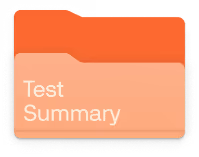
Key Benefits
- See your true estrogen level, measured precisely at very low concentrations.
- Spot estrogen imbalance driving hot flashes, irregular cycles, or vaginal dryness.
- Clarify causes of gynecomastia, low libido, or infertility in men.
- Guide estrogen therapy or estrogen-blocking cancer treatment by confirming target estradiol levels.
- Support fertility planning by gauging ovarian activity alongside FSH and LH.
- Protect bone health by flagging low estrogen linked to bone loss.
- Track perimenopause changes over time to explain symptoms and cycle shifts.
- Best interpreted with FSH, LH, progesterone, cycle timing, and current medications.
What is Estradiol (ultrasensitive)?
Estradiol is the body’s most potent natural estrogen (17β‑estradiol, E2). It is produced mainly by the ovaries, with smaller amounts from the testes and adrenal glands, and by converting androgens to estrogen (aromatization) in fat, liver, and brain; during pregnancy the placenta becomes a major source. “Ultrasensitive” refers to measuring estradiol accurately when only tiny amounts are present in the bloodstream.
Estradiol orchestrates reproductive biology: it drives follicle development, triggers ovulation, and builds the uterine lining (endometrium). It also acts widely beyond reproduction, supporting bone formation and strength, influencing brain function and mood, modulating cardiovascular and metabolic pathways, and affecting skin and connective tissue. In all sexes, a significant share of estradiol comes from the conversion of testosterone and is essential for maintaining bone density, sexual function, and closure of growth plates. An ultrasensitive estradiol measurement reflects baseline estrogenic signaling at very low concentrations, capturing subtle physiological changes that standard measurements may miss.
Why is Estradiol (ultrasensitive) important?
Estradiol (ultrasensitive) measures the body’s most potent estrogen at very low concentrations, letting us see how estrogen is shaping whole-body function—reproductive signaling, bone building, brain and mood regulation, vascular tone, and metabolic balance. The ultrasensitive assay matters for men, children, postmenopausal women, and people on aromatase inhibitors, where ordinary tests can miss clinically important low levels.
Typical values depend on life stage. In premenopausal women, estradiol naturally runs low after menstruation, surges before ovulation, and stays moderately elevated in the luteal phase. Pregnancy brings very high physiologic levels. Men and postmenopausal women usually have low—but not zero—values from peripheral aromatization. For most, feeling well aligns with the physiologic middle of the expected range for their context.
When estradiol is low, it signals reduced ovarian output or limited aromatization. Women may notice hot flashes, vaginal dryness, low libido, sleep and mood changes, missed periods, and lower fertility; over time, bone density falls and fracture risk rises. Men can experience reduced sexual function, joint aches, and bone loss. Children and teens may show delayed pubertal progression and suboptimal bone accrual.
When estradiol is high, it may reflect ovarian activity (e.g., mid-cycle surge, cysts), pregnancy, exogenous exposure, or increased aromatization from adipose tissue. Women can have breast tenderness, migraines, heavy or irregular bleeding, and endometrial thickening. Men may develop gynecomastia and impaired fertility. In children, early pubertal signs can appear. Very high levels can influence clotting and fluid balance.
Big picture: estradiol is a central node in the hypothalamic–pituitary–gonadal axis, bone remodeling, brain networks, and cardiometabolic health. Tracking it with an ultrasensitive assay helps align symptoms with life stage, clarifies long-term risks like osteoporosis and reproductive disorders, and connects hormone biology to whole-body well-being.
What Insights Will I Get?
Estradiol (ultrasensitive) measures the principal bioactive estrogen at very low concentrations. It integrates ovarian or testicular production with peripheral aromatization of androgens. Estradiol shapes energy and glucose use, lipid handling, bone turnover, vascular tone and clotting, brain signaling, immune balance, and reproductive function.
Low values usually reflect reduced gonadal output, less aromatization, or hypothalamic–pituitary–gonadal suppression. In premenopausal women, very low levels outside the early follicular phase suggest ovarian insufficiency or hypothalamic amenorrhea, with vasomotor symptoms, bone loss risk, urogenital dryness, and low libido. In men and postmenopause, deficiency compromises bone and can shift body composition and insulin sensitivity.
Being in range suggests adequate estrogen signaling for age and sex, supporting stable bone turnover, favorable vascular and lipid profiles, efficient glucose handling, and steady mood and cognition. Cyclic mid‑cycle peaks are expected in menstruating women; men and postmenopause show stable low‑to‑moderate values. In men, fracture risk appears lowest near mid‑range.
High values usually reflect increased ovarian output (mid‑cycle or pregnancy), exogenous estrogens, excess aromatization, reduced hepatic clearance, or estrogen‑secreting tumors. Women may note breast tenderness, heavy or irregular bleeding, migraines, and fluid retention; men may develop gynecomastia and reduced fertility. System‑wide, higher estradiol augments clotting factors and thrombotic risk.
Notes: Interpret by menstrual phase, menopausal status, and pregnancy. Medications, liver or thyroid disease, and adiposity affect levels. Ultrasensitive LC‑MS/MS is preferred at low concentrations; some immunoassays overestimate in men and postmenopause.






.avif)



.svg)





.svg)


.svg)


.svg)

.avif)
.svg)










.avif)
.avif)
.avif)


.avif)
.png)


